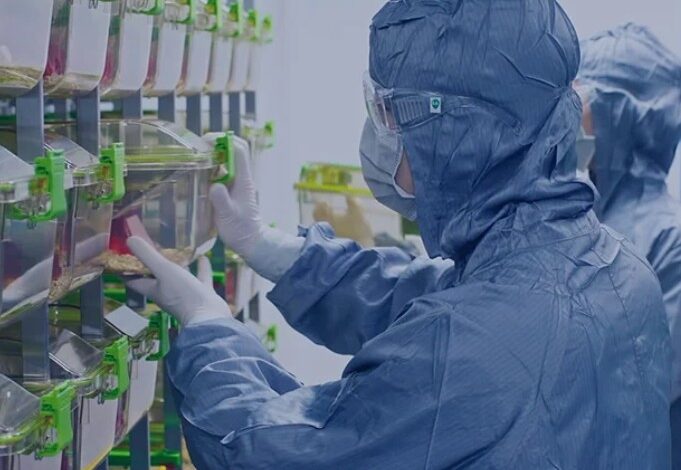How Do Rodent Pharmacokinetic Studies Inform Drug Development?

Pharmacokinetic (PK) studies in rodents provide essential insights into the drug development process, helping predict how new drugs will behave in humans. These studies guide decisions on dosing, scheduling, and safety evaluations, ensuring the most promising drug candidates progress to clinical trials. By monitoring absorption, distribution, metabolism, and excretion in rodents, researchers gain critical data to predict human drug behavior, optimize dosage levels, and identify potential safety concerns for successful therapeutic development.
Understanding the Role of Rodent PK Studies
What Is a Rodent PK Study?
A Rodent PK Study investigates how a drug moves through the body of a rodent, focusing on the processes of absorption, distribution, metabolism, and excretion (ADME). Researchers administer the drug to rodents and collect blood and tissue samples over time. By analyzing these samples, they determine the concentrations of the drug and its metabolites, providing a detailed profile of the drug’s pharmacokinetics. These studies are essential for understanding the drug’s behavior and optimizing its development.
Why Rodents Are Commonly Used in PK Testing
Rodents are commonly used in PK testing due to their small size, ease of handling, and well-characterized biology. Additionally, rodents have relatively short lifespans and rapid reproductive rates, making them ideal for conducting timely and cost-effective studies. Their genetic and physiological similarities to humans allow researchers to extrapolate data from rodents to predict human responses, making them invaluable in the early stages of drug development.
See also: The Surprising Health Benefits Of Seeing A Chiropractor Regularly
Key Pharmacokinetic Parameters in Rodent Studies
Absorption and Bioavailability
Absorption and bioavailability are critical parameters in rodent PK studies. Absorption refers to how well a drug enters the bloodstream after administration, while bioavailability measures the proportion of the drug that reaches systemic circulation unchanged. By analyzing plasma concentration-time curves, researchers can determine these parameters, which help predict the drug’s efficacy and dosing regimen in humans. High bioavailability suggests efficient drug absorption, while low bioavailability may indicate issues requiring formulation adjustments.
Distribution, Metabolism, and Excretion (DME)
Distribution, metabolism, and excretion (DME) are key components of rodent PK studies. Distribution involves how the drug spreads throughout the body and tissues, while metabolism refers to the chemical changes the drug undergoes, primarily in the liver. Excretion is the process of eliminating the drug from the body, largely through urine or feces. Understanding DME allows researchers to predict potential drug-drug interactions, identify metabolites, and ensure that the drug is cleared efficiently, minimizing the risk of toxicity.

How Rodent PK Studies Predict Human Drug Behavior
Translating Rodent Data to Human PK Models
Translating rodent data to human pharmacokinetic models involves scaling the data based on physiological and anatomical differences between rodents and humans. Researchers use allometric scaling and other mathematical techniques to adjust for factors such as body weight and surface area. These models help predict key parameters like half-life, clearance, and volume of distribution in humans. By accurately translating rodent data, researchers can make informed decisions about dosing and safety for initial human trials.
Bridging Preclinical and Clinical Phases
Rodent PK studies are crucial in bridging the gap between the preclinical and clinical phases of drug development. The data from these studies guide the design of first-in-human (FIH) trials, including selecting starting doses and identifying potential adverse effects. Rodent studies also support the development of safety margins, ensuring that the drug can be administered safely to human volunteers. By providing a robust foundation, rodent PK studies help mitigate risks and enhance the likelihood of clinical success.
Impact on Drug Development and Safety Evaluation
Guiding Dose Selection and Dosing Frequency
Rodent PK studies play a pivotal role in guiding dose selection and dosing frequency for human trials. By understanding the drug’s absorption, distribution, metabolism, and excretion in rodents, researchers can estimate the appropriate starting doses for humans. They can also predict the dosing frequency needed to maintain therapeutic drug levels. This information helps design safe and effective dosing regimens for clinical trials, optimizing the drug’s therapeutic potential.
Identifying Potential Toxicity and Safety Concerns
Identifying potential toxicity and safety concerns is another critical aspect of rodent PK studies. By monitoring drug concentrations and observing any adverse effects in rodents, researchers can identify potential safety issues before progressing to human trials. This early identification allows for modifications to the drug’s formulation or dosing regimen, reducing the risk of harmful side effects. Ensuring a drug’s safety profile in rodents is a crucial step in protecting human volunteers and patients in clinical trials.
Conclusion
Rodent pharmacokinetic studies are vital for informed drug development. By elucidating how drugs are absorbed, distributed, metabolized, and excreted in rodent models, these studies help predict human drug behavior, guide dose selection, and identify potential safety concerns. The insights gained from rodent PK studies ensure that new therapeutics are developed with careful consideration of their pharmacokinetic profiles, enhancing the likelihood of success in clinical trials and ultimately leading to safer and more effective treatments for patients.



